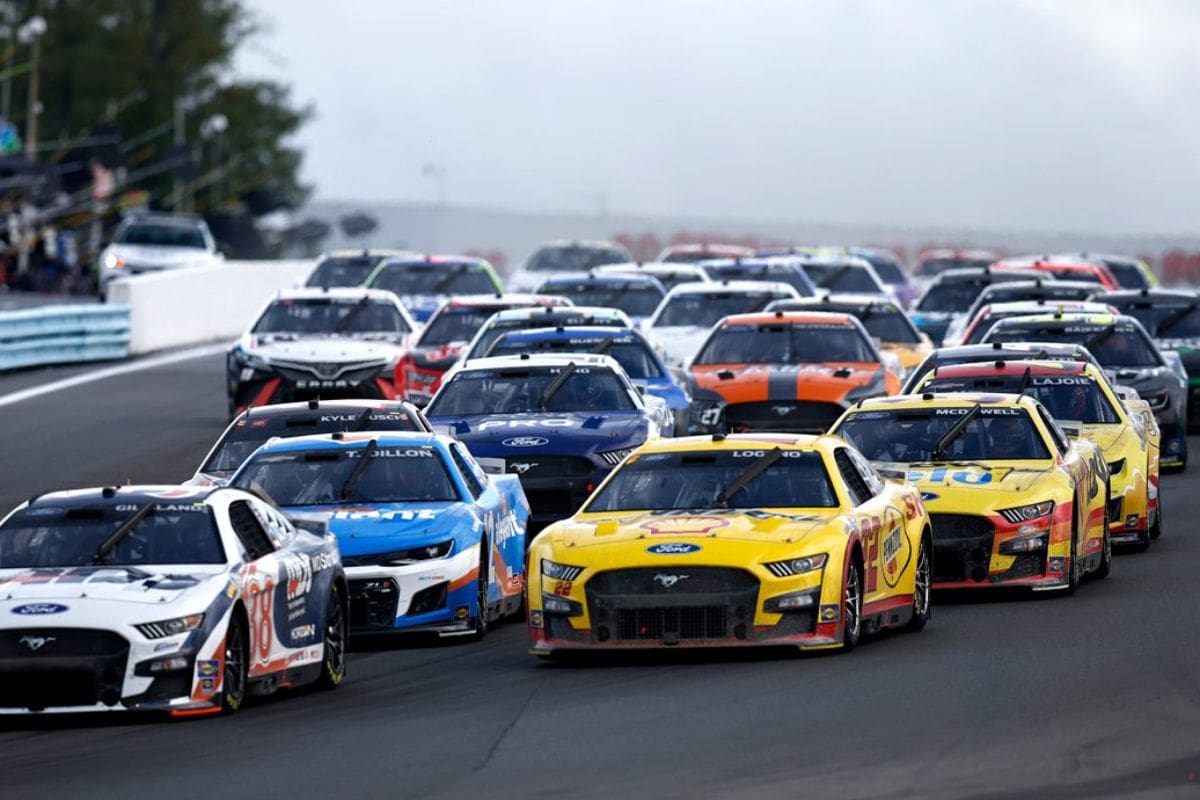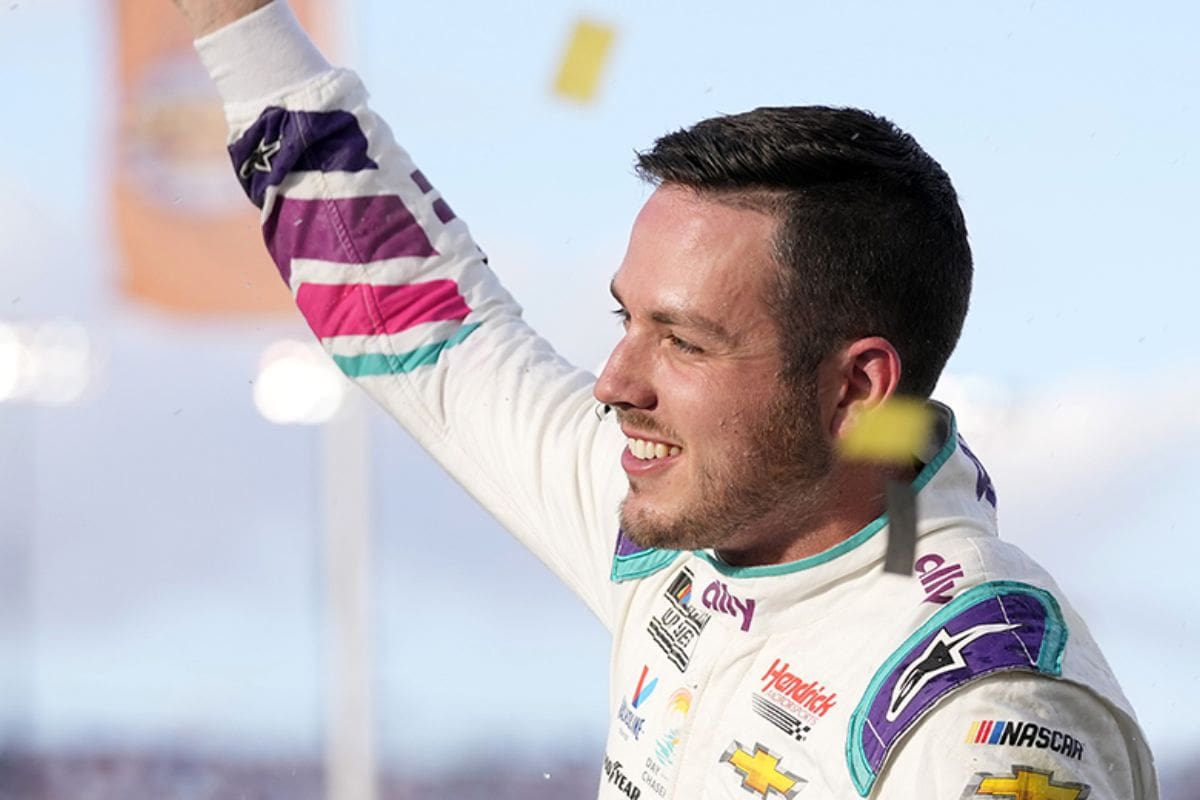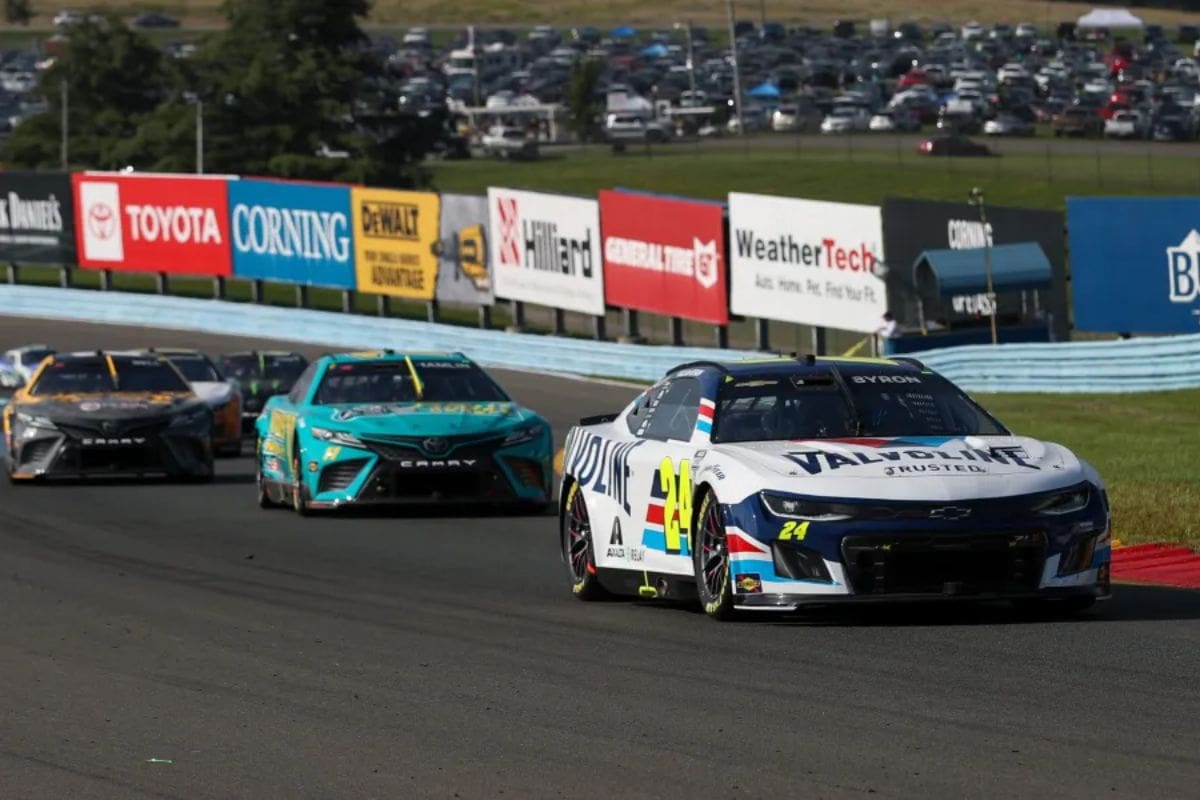Hendrick Motorsports’ Watkins Glen Mastery: As Hendrick Motorsports sets its sights on a sixth consecutive victory at Watkins Glen, the nuances of their past successes become increasingly relevant. The team’s formidable lineup, featuring talents like Chase Elliott and Kyle Larson, emphasizes their capability to navigate the complexities of this renowned road course. However, the unpredictable nature of Watkins Glen, coupled with evolving track conditions, presents unique challenges that could disrupt their streak. This raises an intriguing question: what strategies might they employ to maintain their dominance in such a competitive environment?
Key Highlights
- Hendrick Motorsports has dominated Watkins Glen, winning every race since 2018 and securing podium finishes in the last five events.
- Key drivers like Chase Elliott and Kyle Larson have proven track records and high driver ratings, enhancing HMS’s chances for victory.
- Recent track modifications and adaptive strategies are essential, as they impact tire management and overall race performance.
- The competitive nature of NASCAR road courses means unpredictability, making adaptability crucial for HMS to secure another win.
- HMS’s strong historical performance at Watkins Glen, combined with current driver standings, positions them well for a sixth consecutive victory.
Hendrick Motorsports’ Dominance at Watkins Glen
Hendrick Motorsports has undeniably established itself as a formidable force at Watkins Glen, showing a remarkable track record that emphasizes its dominance in the NASCAR landscape. Since 2018, HMS has secured victory in every race at this iconic road course, a feat that highlights both the team’s tactical acumen and exceptional driver talent. The last five editions of the ‘Go Bowling at the Glen’ have all concluded with HMS drivers atop the podium, solidifying their reign over this challenging track.
The team’s recent performances are particularly remarkable given the competitive nature of NASCAR, where road courses often level the playing field among teams. HMS’s success can be attributed to meticulous preparation and a deep understanding of the unique demands posed by Watkins Glen. The combination of engineering skill and drivers who excel in road racing has enabled HMS to craft winning strategies that take advantage of both speed and tire management.
Currently, all but one of HMS’s drivers occupy positions within the top ten of the NASCAR Driver Standings, evidencing the team’s collective strength. With William Byron, the last race winner, and previous champions like Kyle Larson in their ranks, the team is well-positioned to extend its winning streak.
The upcoming race offers a valuable opportunity for HMS to capitalize on its historical dominance and make use of its tactical insights, with the potential for yet another victory affirming its status as the preeminent force at Watkins Glen.
The Best HMS Driver for a Watkins Glen Victory
When evaluating the best candidate for victory at Watkins Glen from the Hendrick Motorsports lineup, several factors come into play, including individual driver performance, historical data, and current form. Among the quartet, Kyle Larson emerges as a formidable contender, boasting the highest average driver rating of 111.1 since the pandemic. This statistic highlights his consistent competitiveness on the 2.45-mile road course.
However, when considering the larger historical context, Chase Elliott stands out as the driver with a remarkable track record, emphasized by an impressive average rating of 112 prior to the pandemic and two notable victories in 2018 and 2019. Elliott’s inaugural Cup Series win at Watkins Glen in 2018 not only marks a pivotal moment in his career but also establishes him as a driver who thrives under the pressure of road course racing.
William Byron’s recent victory at Watkins Glen adds another layer of complexity to the equation, showcasing the depth of talent within HMS. While Alex Bowman has yet to secure a win at this prestigious venue, his recent performances, including a triumph at the Chicago Street Course, indicate a promising upward path.
While Larson’s recent form and performance metrics are compelling, Elliott’s historical success and experience at Watkins Glen position him as the best candidate from Hendrick Motorsports to claim a sixth consecutive victory. The blend of past triumphs and current competitiveness creates a perfect storm for Elliott, making him the driver to watch.
Alex Bowman’s Chances and HMS Drivers’ Road Course Success
Alex Bowman’s potential at Watkins Glen is a topic of intrigue, particularly given his mixed historical performance on road courses. With a rather modest average finish of 21.4 at this specific venue, he might not be the primary choice for a victory. However, NASCAR analysts suggest that Bowman is an underrated road course driver, hinting at his capacity to outperform expectations.
This year, he stands out as the only Playoffs driver who has accumulated the most points on road courses, indicating a level of consistency and skill that cannot be overlooked.
Bowman’s expedition is further illuminated when considering the broader context of Hendrick Motorsports (HMS). With teammates Kyle Larson, William Byron, and Chase Elliott all securing victories on road courses this season, Bowman’s performance becomes even more essential.
While Bowman may face stiff competition from his accomplished peers, the collective success of HMS at road courses provides him with invaluable insights and support.
The upcoming race at Watkins Glen represents a unique opportunity for HMS drivers to capitalize on their established expertise. A sixth consecutive victory for the team at this track since 2021 could not only solidify their dominance but also secure a vital spot in the Round of 12 for at least one driver.
Watkins Glen’s Unpredictability and Track Changes
Watkins Glen International has long been a venue where unpredictability reigns, often producing surprising outcomes that defy pre-race predictions. This characteristic has solidified its reputation as a challenging circuit, where even the most seasoned drivers can find themselves grappling with unforeseen circumstances. The historical significance of unexpected results is evident, as depicted by Chase Elliott’s initial victory, a proof of the race’s ability to turn the tables regardless of prior expectations.
Recent modifications to the track, prompted by drivers’ concerns regarding excessive G-forces in the ‘Bus Stop’ section, add another layer of complexity to this storied venue. NASCAR’s decision to implement these changes reflects a commitment to driver safety and performance improvement.
However, the true impact of these adjustments remains uncertain, as drivers like Ty Gibbs have suggested that the alterations may ultimately lead to faster lap times. The real effects will only be revealed during the race weekend, as teams adapt their strategies to the evolving dynamics of the track.
The inherent unpredictability of Watkins Glen is compounded by its layout, which is notorious for its tight corners and elevation changes. This unique configuration demands precision and skill, often leading to dramatic moments that can shift the balance of the race in an instant.
As Hendrick Motorsports seeks to secure a sixth consecutive victory, they must navigate these variables, reminding us that in racing, the only certainty is uncertainty.
Technicalities and Strategy for Watkins Glen
Maneuvering the specialized intricacies of Watkins Glen International demands a multifaceted approach, particularly because teams prepare for the unique challenges posed by the track’s recent modifications. The introduction of new curbing and tire compounds requires an adaptive strategy that will greatly impact race performance.
The curbing changes aim to lower G-force impacts on Next Gen cars, allowing drivers to maintain speed through critical corners. However, the effectiveness of the interchangeable curbing will depend on its specific configuration on race day. Teams must consider how these adjustments affect their handling and cornering speeds.
Moreover, tire strategy will play a crucial role in the race outcome. The notorious high tire wear at Watkins Glen will be exacerbated by the new rumble strips on Turn 1, which challenge traditional racing lines. Consequently, teams must navigate the following considerations:
- Tire Management: With Goodyear’s new tire compound reducing fall-off time, teams must balance speed with durability.
- Race Strategy: Comprehensive race strategy, influenced by track position, will dictate pit stop timing and tire choices.
- Qualifying Performance: Given the limited passing opportunities, starting position will be critical; high qualifiers will likely dominate.
- Adaptability: The extended practice session provides a vital opportunity to refine setups in response to the evolving track conditions.
News in Brief: Hendrick Motorsports’ Watkins Glen Mastery
Hendrick Motorsports’ pursuit of a sixth consecutive victory at Watkins Glen is highlighted by a combination of driver talent, historical performance, and tactical adaptability. The unpredictable nature of the road course necessitates a keen focus on mechanical preparation and real-time decision-making. As the team utilizes its engineering expertise and past successes, the potential for another triumphant outing remains high, solidifying Hendrick Motorsports’ legacy in this prestigious race.
ALSO READ: Mclaren Racing Potential Collab With Hendrick Motorsports: Daytona 500 Buzz Grows



